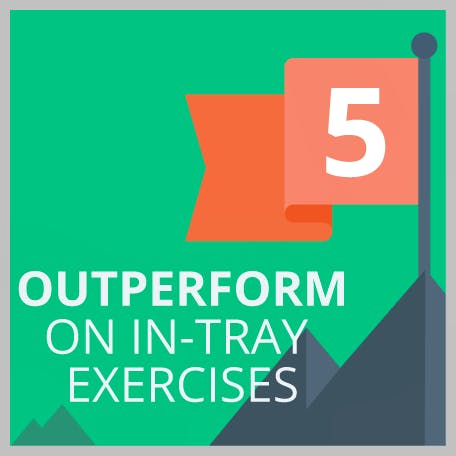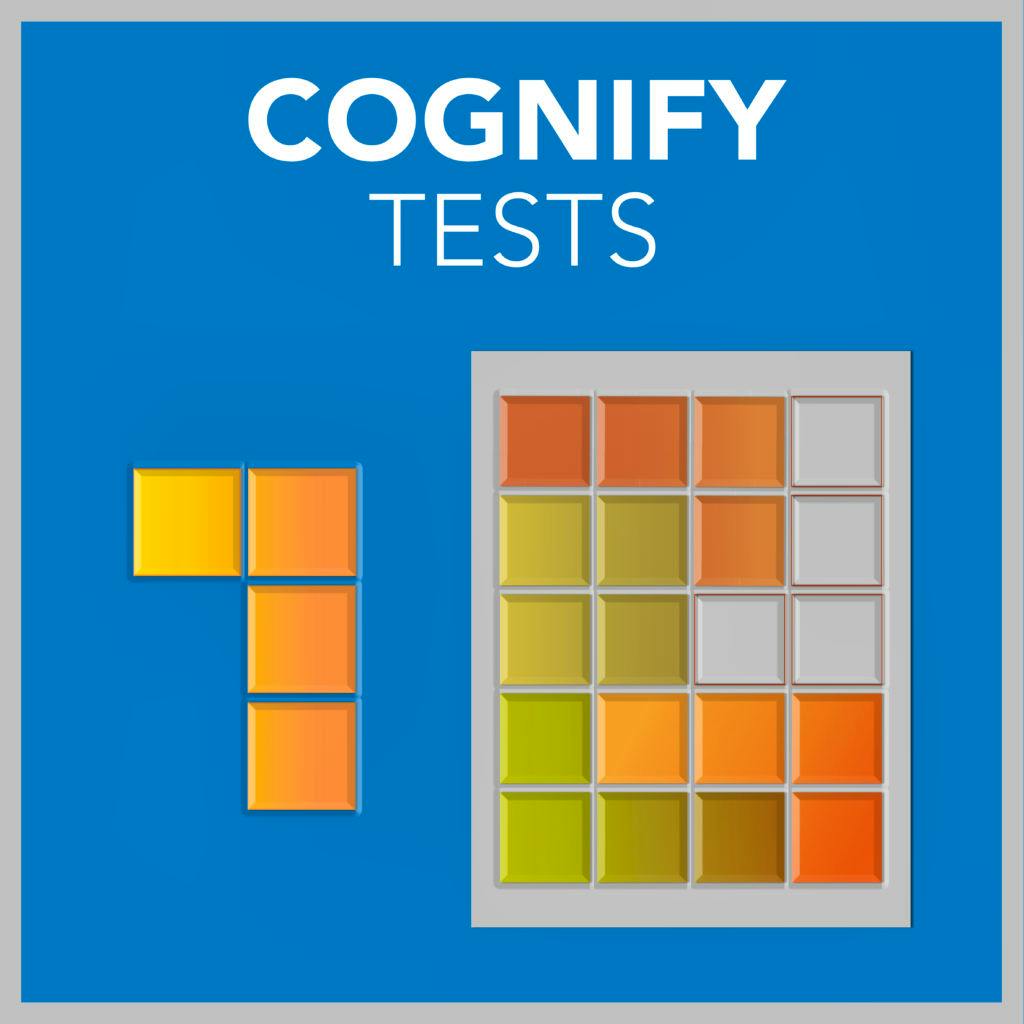A Guide to Raven's Progressive Matrices Test: Tips & Examples
Updated November 18, 2023
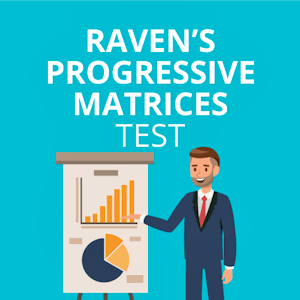
- What Are Raven’s Progressive Matrices?
- The Three Forms of Raven’s Matrices
empty
empty
empty
- Scoring for the Raven’s Progressive Matrices
- Rules for Answering Raven’s Matrices Correctly
- Examples of the Raven’s Matrices Test
empty
empty
empty
- How to Prepare for the Raven’s Assessment
- Frequently Asked Questions
- Final Thoughts

The Raven’s Progressive Matrices is a test that is often used as part of the recruitment process for high-level management and analytical roles.
In this article, you will learn more about the test, its history and background, as well as the different types of tests that are available and what you can expect if you are going to be taking the test.
You will also find some example questions that you can expect to see in each type of test and get helpful pointers that you can use to prepare and do well in the assessment.
What Are Raven’s Progressive Matrices?
Raven’s Progressive Matrices are non-verbal tests, which means that, to complete the test, an individual does not need to rely on any sort of language skills.
Originally designed by John C Raven as a research tool in 1936, the evaluation capabilities of the assessment soon made it part of the recruitment process for the British Armed Forces, at both soldier and officer level, and then a part of the recruitment process for armed forces around the world.
In essence, the Raven’s Progressive Matrices are a series of 3 x 3 matrices that contain shapes or symbols in some sort of sequence with a missing item.
To score correctly on each matrix, the candidate needs to select the missing item in the grid from the multiple-choice options presented.
The Raven’s Progressive Matrices are similar to abstract reasoning tests, but one of the main differences is that the matrices and the sequences become progressively more difficult as you move through the test; so the later questions are harder than the earlier questions, with the scoring system weighted to match.
They are useful in recruitment because they are a measurement tool for what is known as fluid intelligence – the ability to make decisions based on new and unfamiliar information – as well as general intelligence and logical reasoning.
The non-verbal design of the test makes it free from cultural or ethnic bias, which makes it a reliable indicator of IQ and general intelligence.
The Three Forms of Raven’s Matrices
Raven’s Standard Progressive Matrices
This is the original test, first published in a booklet in 1938 and adapted for the British Armed Forces to use in recruitment from 1942 (this continued until early this century).
In the Raven’s Standard Progressive Matrices (RSPM), there are five sets (A to E) of 12 matrices, making a total of 60 questions to be answered within the time limit of 40 minutes.
Each matrix is presented in black on a white background, and each set gets progressively harder.
As time (and technology) has progressed, the RSPM has become computerized, with alternative questions available to reduce the risk of it becoming too familiar.
This test is still used in recruitment, usually for lower-level supervisory or analytical roles, although you are more likely to take the Raven’s Advanced Progressive Matrices in a recruitment situation.
Raven’s Colored Progressive Matrices
The Raven’s Colored Progressive Matrices (RCPM) have been created to be more visually stimulating, by taking the first two sets from the RSPM and inserting a further test between – on a colored background.
This test is not often used in recruitment; instead, it has been devised to be used by children aged 5 to 11, for the elderly, and for those who might be physically or mentally impaired in some way.
The final few matrices of the last set are presented in black and white, which makes it more straightforward to transition to the RSPM sets if the individual performs better than expected.
In the RCPM, there are a total of 36 questions, with a total time limit of 40 minutes.
Raven’s Advanced Progressive Matrices
The Raven’s Advanced Progressive Matrices (RAPM) consists of two sets of matrices, with 12 items in the first and 36 in the second – giving a total of 48 questions to be answered in 40 minutes.
The RAPM is presented in black and white, like the Standard test, but the matrices are more difficult even at the beginning of the test, which makes this assessment more suitable for adults or teenagers that are of above average intelligence – and for hiring positions like upper-level management and analytical roles.
Results from the RAPM are accepted as entry to some high IQ societies, including Intertel, the International High IQ Society, and the International Society for Philosophical Enquiry.
Scoring for the Raven’s Progressive Matrices
The scoring for progressive assessments like the Raven’s Progressive Matrices isn’t simply about how many questions you answer correctly – the scores available for each item in the test are weighted depending on how difficult they are designed to be.
In the simplest terms, you will receive less of a score for answering the earlier questions correctly and more for answering the later questions correctly, as the items get progressively more difficult as you move through the test.
This discrimination in scoring can sometimes be used to your advantage if you are taking the test – it is not negatively scored, so if you are unsure of the answer to a question, it is worth making a best guess so that you can move on to the more difficult questions (which are worth more to your overall score).
When you complete the test, your marks create what is known as a theta score, which is on a scale from –4.000 to +4.000.
Candidates who score –4.000 are considered to have extremely low ability, while those who score +4.000 are considered to have extremely high ability.
When your score is presented in the final report, the theta score will have been transposed into a percentile, which is usually much easier to read and understand and makes it easier for the recruiter to compare your score with other test takers.
Rules for Answering Raven’s Matrices Correctly
When you are looking for the answers to each matrix, you need to evaluate the pattern that is used in the grid. There are several rules that are used to create the sequences, and you’ll need to be able to recognize them quickly to find the missing item effectively.
Here are the rules that you need to be able to recognize:
- Constant in a row – Something in each box is consistent through the row and changes in the columns.
- Quantitative progression – This describes an increase or a decrease in position, size, or number of things in each box as it progresses through each row.
- Figure addition or subtraction – Something from the middle column is added or taken away from a different column to produce the third column.
- Distribution of three values – This describes a matrix where there are always three values of a specific category in each row, such as three black squares or three horizontal lines.
- Distribution of two values – The same as above, but with two values in each row, making the third irrelevant.
- Motion – Objects move through the row – often an inner object – and you can usually compare the position of the object compared to a frame or an outer item.
- Rotation – In a simple matrix, the pattern includes a rotation in a fixed way through the rows, which is repeated through the columns too.
- Reflection – Objects in each box are mirrored in the next, in a repeatable pattern.
The last thing to mention here is that you might need to use correspondence finding, which is a process of elimination that you will need to use when there is more than one of the above rules used in creating the pattern in the matrix.
This means that you will have to form hypotheses about the sequence and test them out with each row, eliminating possible answers from the multiple-choice options you are given.

If you need to prepare for a number of different employment tests and want to outsmart the competition, choose a Premium Membership from JobTestPrep.
You will get access to three PrepPacks of your choice, from a database that covers all the major test providers and employers and tailored profession packs.
Which is the right item to fit in the empty slot?
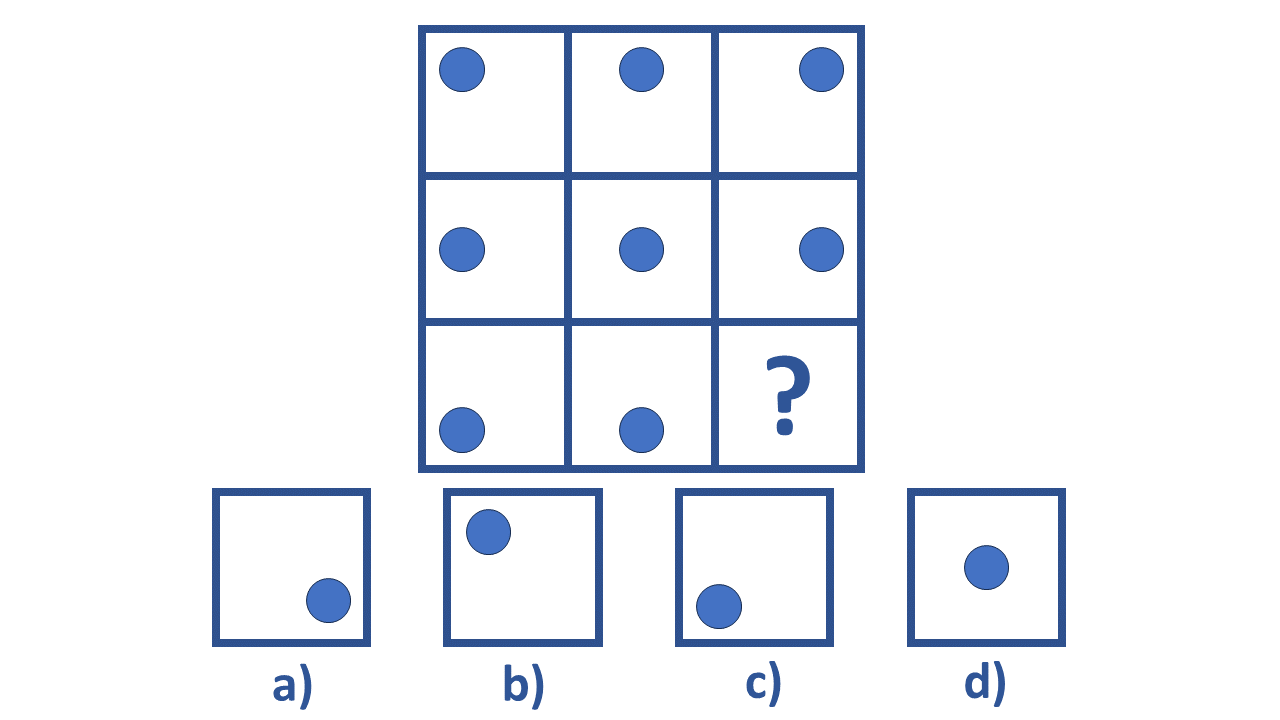
Which image should be in the square with a question mark?
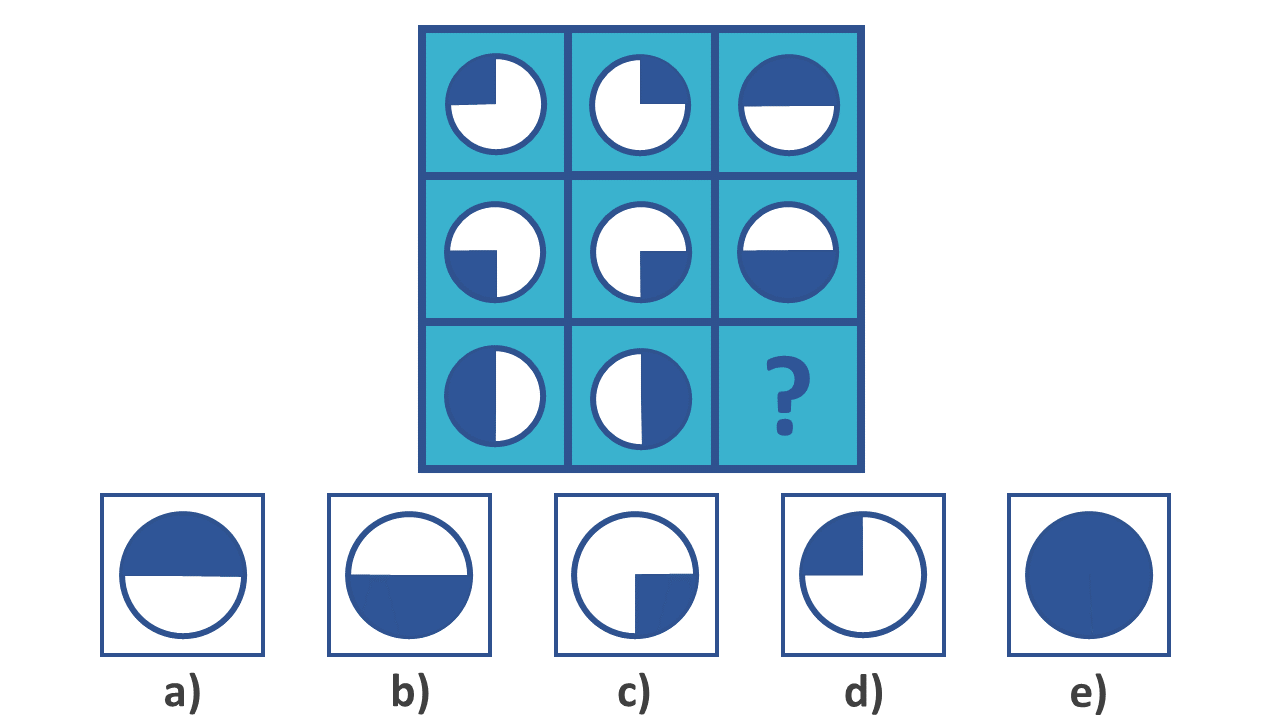
Which image should be in the square with a question mark?
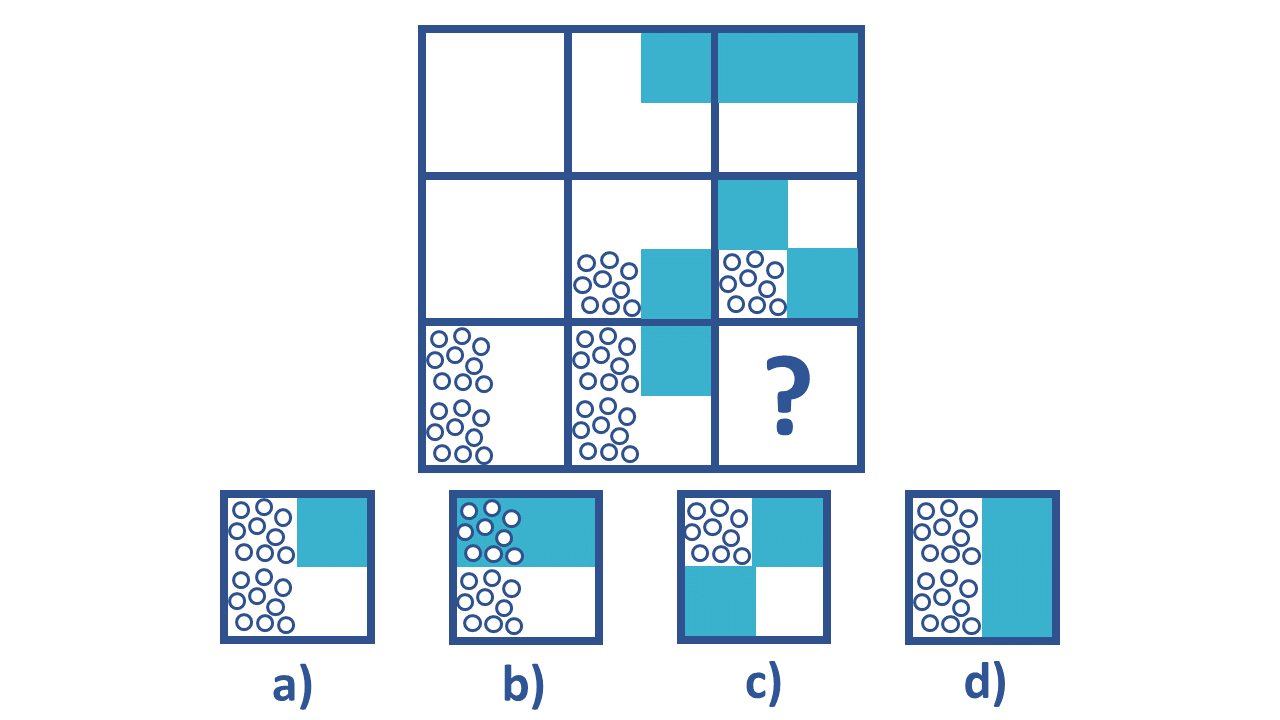
How to Prepare for the Raven’s Assessment
Step 1. Take Online Practice Tests
If you are unfamiliar with the structure and layout of a test like the Raven’s Assessment, you are likely to find them more difficult – so one of the best things that you can do to prepare is to complete some practice tests.
Tests like abstract reasoning practice tests will help you to prepare for the Raven tests in several ways.
First, you will become more confident in the content and the ways that the sequences will be built in the matrices. Getting used to spotting those patterns and understanding the rules used while under exam pressure will make it more likely that you won’t have to deal with unfamiliarity as well as test nerves.
Second, you will get the opportunity to get used to the way that these types of online tests are structured, how you are expected to record your answers, and what the time limit feels like in real life – 40 minutes might seem like a relatively long time, but you will have less than a minute per question in most of the Raven’s Progressive Matrices.
This might be simple enough in the early stages, but in the progressively more difficult question later in the test you might struggle.
Lastly, using a Raven’s practice test before you start preparing will give you a baseline for your study – you can use the results of that first test to see where you need to improve, the types of patterns that you need to get more confident with, and as a way to establish your personal development.
Comparing the first practice test to a later test should demonstrate that you have improved.
Step 2. Use the Rules
The rules of the sequences used in the Raven’s Progressive Matrices are a great way for you to form hypotheses about what the missing item will be – so get used to looking for these in practice tests and your other preparation activities.
While the symbols and shapes in the matrices might be different, you can rely on the rules to help you make better (and faster) deductions about what should come next.
These rules are:
- Constant in a row
- Quantitative progression
- Figure addition/subtraction
- Distribution of two/three values
- Motion
- Rotation
- Reflection
Step 3. Do Logic Puzzles
The Raven’s Progressive Matrices are all about non-verbal reasoning, and you will need to rely on some logical deduction ability to be able to answer the questions correctly.
This can often be challenging if you are not used to it, but there are other ways to prepare rather than just relying on practice tests.
Logic puzzles are available in several different formats – you can still buy puzzle books that are designed for distraction on long journeys.
You’ll find all sorts of ‘brain training’ games in these, from the aforementioned logic puzzles through to sudoku, crosswords, and even spot-the-difference. All of these can help you exercise your brain and increase your logical capacity.
You can also download brain training games to your smartphone from the app store – these are a collection of different mini-games that you can play, often meaning that you will have to think outside the box to answer the questions and use your fluid intelligence and abstract reasoning skills to complete them. They are also a lot of fun to play, too.
Step 4. Learn Time Management
Exams are stressful for many. This is not just because of the content of the test, but because you are under pressure to complete it.
As mentioned before, time limits are in place when you are taking the Raven’s Progressive Matrices – and if you are not used to working under time pressure, you are more likely to run out of time before you have completed it.
In a test like the Raven’s Progressive Matrices, running out of time carries more of a penalty than in other assessments, because the scores are weighted in such a way that the later questions are worth more than the earlier ones (because you get more of a score for correctly answering the more difficult questions).
Whenever you are practicing, make sure that you are creating a realistic exam environment – using a timer, turning off all notifications, and working in silence. This will help you feel less nervous when you are completing the real thing.
Raven’s Progressive Matrices is an assessment of fluid intelligence and abstract reasoning, and it is widely used in recruitment, especially for analytical or management roles.
It is a non-verbal reasoning test based on finding sequences and patterns made from shapes or symbols in a 3 x 3 matrix, with one item missing.
Raven’s Progressive Matrices might have been designed for research purposes, but the UK Armed Forces were the first to use it as a recruitment filter for both soldiers and officers.
Today, the Raven’s Progressive Matrices are used mostly in recruitment to evaluate reasoning ability and general intelligence.
The best way to practice for the Raven’s Progressive Matrices test is to take practice tests and review lots of Raven test examples.
Abstract reasoning tests are one of the best places to start, as well as other tests that are designed to mimic the content and structure of the Raven’s tests.
The Raven’s Progressive Matrices were originally created in 1936 by John C Raven and published in 1938 as a research tool.
The first use of the Raven’s Progressive Matrices as a recruitment tool was in 1942, when all entrants to the British Armed Forces were expected to complete a 20-minute version of the assessment.
Raven’s Progressive Matrices measure non-verbal logical reasoning, and it is considered to be an accurate estimate of ‘fluid intelligence’ – making decisions based on new and unfamiliar information.
As there are no language-related questions, the Raven’s Progressive Matrices are considered to be unbiased in terms of culture and ethnicity, merely separating individuals out based on their abstract thinking skills.
There are different versions of the Raven’s Progressive Matrices that can be used for different kinds of people.
The Raven’s Standard Progressive Matrices are the originally designed tests, suitable for use in most adults and adolescents.
The Raven’s Colored Progressive Matrices are designed to be more visually stimulating and are used in children aged 5 to 11, as well as the elderly and those who have mental or physical disabilities.
The Raven’s Advanced Progressive Matrices are designed for use in adults and adolescents who are considered to have above average intelligence, and these are the ones that are most often used in recruitment.
Raven’s Progressive Matrices are a series of 3 x 3 matrices where shapes or symbols form a sequence, and you will need to select the missing item from the multiple-choice options given.
Your score is displayed as a percentage, which demonstrates your relevant performance compared with other test takers – the higher, the better.
Final Thoughts
Raven’s Progressive Matrices are a common way for recruiters to evaluate candidates based on their abstract reasoning, logical thinking, and general intelligence. You are most likely to complete these tests when you are applying for an analytical role or a place in a management team.
Completing the Raven’s Progressive Matrices means being able to recognize sequences and the patterns that govern them. You will find this much easier if you have an awareness of the rules that are used when these sequences are created.
Preparation through practice tests – and even doing things like fun brain training games – will help you to become more familiar with the test structure and the content of the questions.
Performing well in a Raven’s Progressive Matrices assessment will demonstrate to recruiters that you are capable of the logical thinking and analysis that they need for the role – and that you have the right fluid intelligence that they are looking for.











